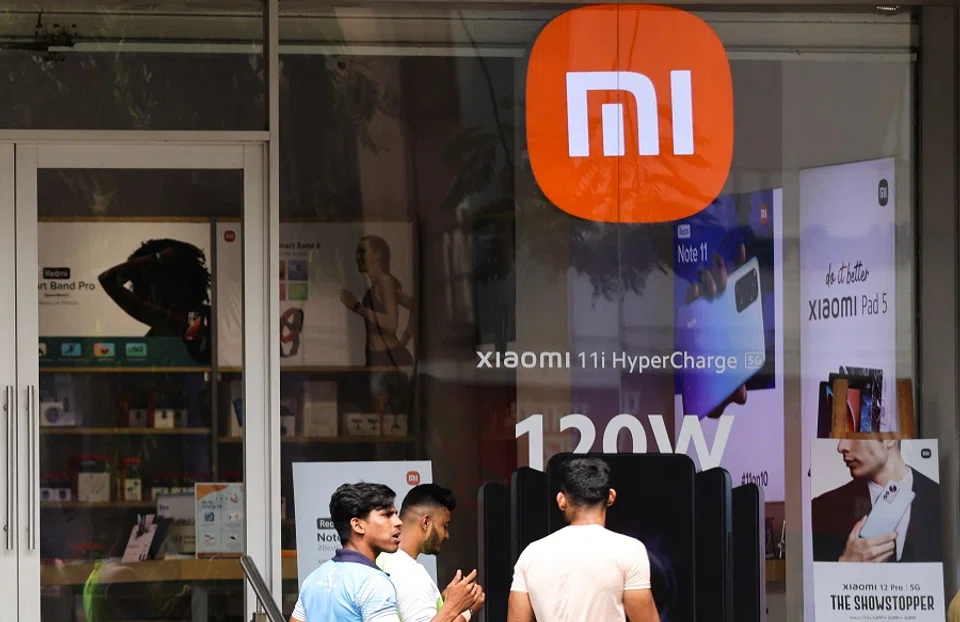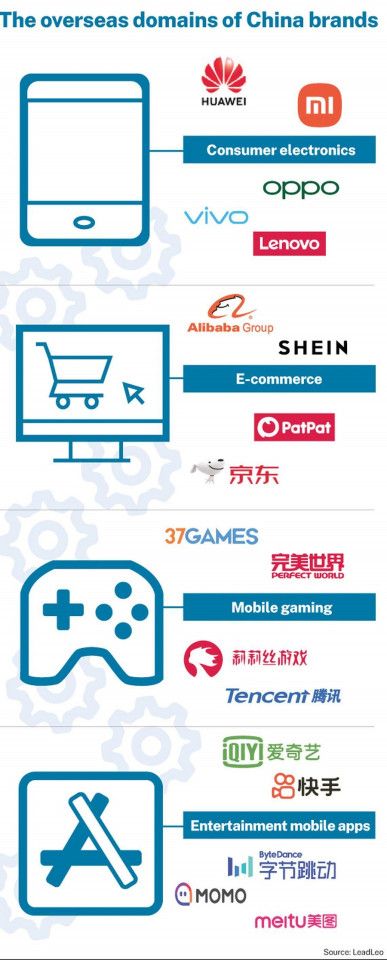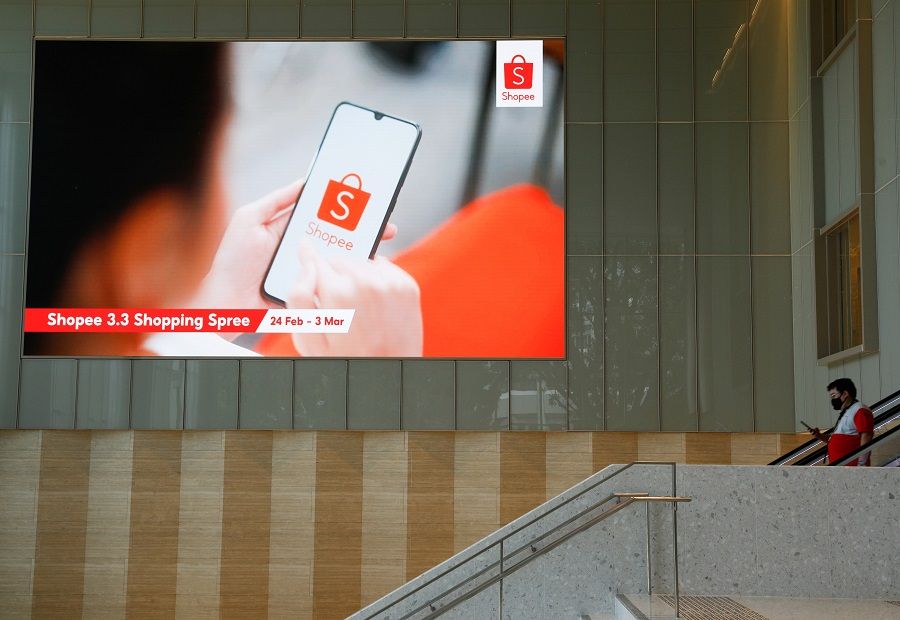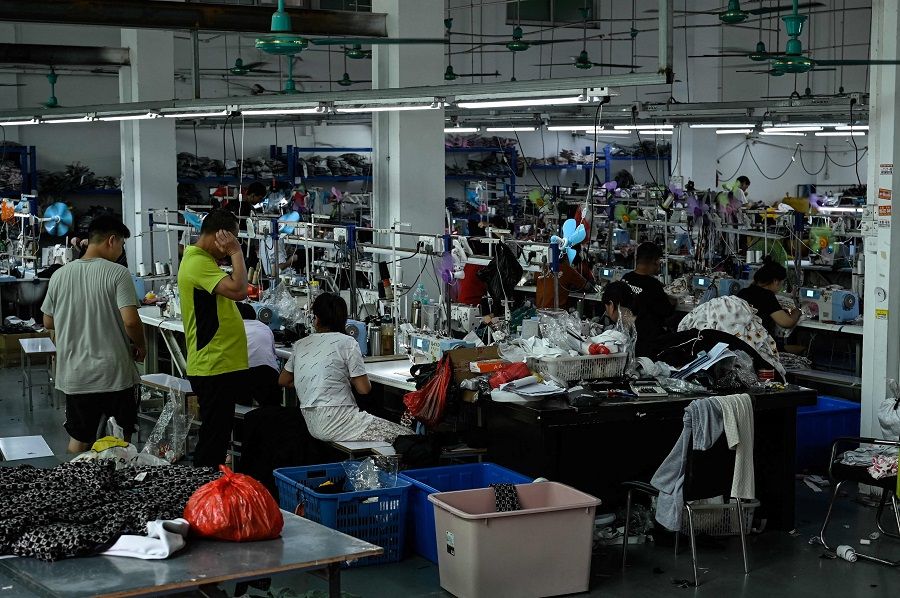Once 'the world's factory', China now builds global brands

As a global manufacturing powerhouse, China has churned out goods for international brands big and small, making "Made in China" truly ubiquitous. But its image as the factory of the world has evolved. No longer just a manufacturer, China is moving from its backstage role into the limelight, as it creates brands for the international market.
Southeast Asia, with its vast population, is an attractive prospect for many Chinese brands, which have come into prominence in areas such as technology products, fashion, tourism, and food and beverage. In this digital age, these brands are casting off earlier negative connotations of the "Made in China" label, and turning truly international.
Going global
For many consumers, the Chinese technology brand Xiaomi brings to mind affordable smartphones. A report by market research firm Canalys puts the average price of a Xiaomi phone at 40% and 75% cheaper than Samsung and Apple phones respectively.
Xiaomi is enjoying growing popularity in Southeast Asia. In the second quarter of last year, it overtook Samsung to become the market leader in the region. Southeast Asia is one of Xiaomi's key markets, as well as the first destination when it first ventured abroad in 2014.
Leong Kah Mun, Xiaomi International's general manager for Southeast Asia, told Lianhe Zaobao that the company is "glocal" - a portmanteau of "global" and "local". The concepts may seem to be at odds, but at the tech brand, they come together to spark something new.
"Global" describes the company's ambition to become an international leader in consumer electronics and smart technology, while "local" describes its aim of being deeply rooted in each of its markets by adopting localised strategies.

"One difference between the strategies deployed in Southeast Asia and China would be that we would explore and understand the unique cultures of the Southeast Asian markets, before introducing products and services that best suit their demands and needs," Leong said. "We would also adopt the local language in our communications for greater relevance," he added
He pointed out that Southeast Asia's economies are among the fastest growing in the world, with both gross domestic product and income levels rising steadily. The region also has a large population of over 650 million. Furthermore, telecommunications infrastructure is developing rapidly and smartphone adoption is high - all factors contributing to the digital technology boom.
Xiaomi employs more than 200 people across the region, with offices in Singapore - its first Southeast Asian market - as well as Malaysia, Thailand, Vietnam, the Philippines, Cambodia, Laos and Indonesia.
In addition to mobile phones, the company has adopted a more comprehensive strategy in recent years, promoting a lifestyle concept that brings together smartphones, artificial intelligence and the Internet of Things. Its product catalogue includes robot vacuum cleaners, smart cameras, air purifiers and more. Last year, the company also announced its foray into electric vehicles.
Compared with older generations, Gen Z has a more positive perception of "Made in China". - Guan Chong, associate professor of marketing at the Singapore University of Social Sciences
Gen Z, e-commerce fuel overseas forays
The rise of the digital-age Gen Z consumer has helped Chinese brands shed old baggage, bringing new opportunities. From Xiaomi's smart products to TikTok and Tencent's online games, Chinese brands are making their presence felt in both hardware and software.
According to Guan Chong, associate professor of marketing at the Singapore University of Social Sciences, targeting Gen Z consumers has helped brands overcome the "Made in China" stigma, as this generation pays less attention to the origin of products and values innovation and affordability instead. Compared with older generations, Gen Z has a more positive perception of "Made in China".

One advantage of Chinese brands is that they offer "good value for money", said Guan, with products "of comparable quality and novel conception" but price differences that range from 20% to as high as 50%.
They also offer "services beyond imagination and freebies", he added, such as extra services at Haidilao and fashion retailer Shein's 30-day return policy.
... some time is still needed to cultivate the new generation of Southeast Asian consumers: from becoming aware and purchasing, to building up familiarity with Chinese brands.
KPMG China's strategic consulting director He Ying and partner for strategy consulting, consumer and retail Willi Sun pointed out that in comparison with the increasingly mature European and American markets, Southeast Asia is an emerging market with immense potential. The region is not merely a key supply chain and trade partner for Chinese brands, but also a key overseas market.
However, the markets in the region are more dispersed, with each country's culture and business environment differing greatly from the others. As a result, one of the greatest challenges that Chinese enterprises face is localising their products and services, and having specific business strategies for each market. This includes maintaining a stable sales network and supply chain, and attracting local talent.
In their view, some time is still needed to cultivate the new generation of Southeast Asian consumers: from becoming aware and purchasing, to building up familiarity with Chinese brands.
Well-known hotpot chain Haidilao already has branches across Southeast Asia, proving that Chinese brands can become a top-tier consumer name abroad.

When Haidilao ventured abroad in 2012, its first stop was Southeast Asia: Singapore, followed by Malaysia, Vietnam and Indonesia. The hotpot chain is known for fresh ingredients and outstanding service, making for a dining experience like no other for regional consumers, who showed their approval by opening their wallets.
A good brand story is critical, added Guan, a narrative "that weaves together the facts and emotions that position them as unique, forging an emotional connection with the customers".
Overcoming the 'outsourced vendor' image
As China's brands enter Southeast Asia, they strive to shed old stereotypes while banking on capabilities previously developed for the domestic market.
In the past, Chinese manufacturers were known primarily as original equipment manufacturers for international brands - a reputation that they could not shake off even after launching their own brands.
Back then, the "Made in China" label implied poor quality and copycat products, according to the Research Report of 2021 on Chinese Cross-Border Brands by China-based market consultancy LeadLeo Research Institute.
The report stated, "To shake off the stereotype of a low-end manufacturer, 'Made in China' at this stage will have to progress from shipping products to exporting Chinese brands with high added value, and moving up to the mid-to-high end in the global value chain."
"A key challenge that Chinese consumer brands face is a perception of lower quality, which can impede their ability to move up the value chain and price themselves differently, even with the emergence of higher-quality products in recent years." - Joongshik Wang, EY-Parthenon ASEAN Leader

For years, price competitiveness was the key "Made in China" advantage. But analysts see this perception as a double-edged sword, and a potential obstacle when Chinese brands try to break into the premium segment.
EY-Parthenon ASEAN leader Joongshik Wang explained, "For some time, Chinese consumer brands have positioned themselves as value-for-money products or services."
He highlighted, "A key challenge that Chinese consumer brands face is a perception of lower quality, which can impede their ability to move up the value chain and price themselves differently, even with the emergence of higher-quality products in recent years."
But he added that Chinese brands have a strong market position in technology - where they have proved able to produce quality products - and could continue to strengthen their presence there.
Updated lessons for China brands in Southeast Asia
Consumer electronics, e-commerce, mobile gaming and entertainment apps are areas where Chinese brands have had a significant overseas presence in recent years.

In the Top 50 Kantar BrandZ Chinese Global Brand Builders 2021 report by market research firm Kantar and Google, China's consumer electronics (33%) and mobile gaming (15%) had the largest share of "brand power". Alibaba was the top global Chinese brand in the study, followed by ByteDance, Huawei, Xiaomi and Lenovo.
"From digital marketing to establishing a sales network, Chinese brands have been able to tweak existing business models and transplant them into Southeast Asia to seize opportunities." - KPMG China's Strategic Consulting Director He Ying and Partner for Strategy Consulting, Consumer and Retail Willi Sun
The massive scale of their home market has allowed Chinese brands to draw lessons from domestic operations and replicate successful models overseas.
According to a LeadLeo report, as China's demographic dividend dwindles and some sectors become saturated, some Chinese enterprises facing slowing revenue growth have chosen to venture abroad. These are homegrown brands with a significant market share at home.
From digital marketing to establishing a sales network, Chinese brands have been able to tweak existing business models and transplant them into Southeast Asia to seize opportunities, observed KPMG China's He Ying and Willi Sun.
In addition, the established supply chains and well-developed infrastructure of these brands provide responsive support for overseas expansion, further enabling the swift development of localised products and services.
Celeste Tan, manager of Nanyang Polytechnic's Singapore Institute of Retail Studies, noted that China is the world's largest e-commerce market, with major domestic platforms - such as Alibaba's Taobao and Tmall, and JD.com - also being well accepted across Southeast Asia, especially in Singapore and Malaysia.

Regional e-commerce platforms such as Shopee and Lazada are active in adding Chinese sellers to their merchant pool as well. Chinese brands can ease themselves into Southeast Asia by using these platforms to test the receptivity of consumers, she said.
Localisation strategy
Online travel agency Trip.com Group is one of the consumer brands that ventured overseas with the rise of China, with Singapore as its first foreign base. The group established the "Trip.com" brand for the overseas market in 2017 and now has more than 600 employees across Southeast Asia.
Trip.com's chief operating officer Schubert Lou said, "Tourism in China is more sophisticated, and many elements are already integrated, such as online ticket purchase and QR code scanning to enter a park, etc."
"These procedures are already the norm in China, but elsewhere you might still need to pick up the ticket and then go through another system for admission. This type of connectivity is worth learning from and promoting," he added.
Differences across markets make it impossible to implement the same strategy across the region, with localisation thus being essential.
The group has a well-established platform in China with big data insights into user behaviour, providing a reference point for overseas expansion.
Trip.com is bullish about Southeast Asia, citing its population size, younger demographic and consumers' willingness to go beyond established models and try out a one-stop travel agency.

Each market in the region has unique characteristics, noted Lou. For example, hotel staycations were popular among Singaporeans during the pandemic, but the concept was alien to Malaysians, Thais and Indonesians, who preferred domestic tourism. Differences across markets make it impossible to implement the same strategy across the region, with localisation thus being essential.
Localisation is a common Southeast Asian strategy among Chinese brands. One example is smartphone maker Oppo's marketing campaign in Singapore, where the brand worked with local Internet celebrities and producers to encourage young people to make short films with its phones. Another is Xiaomi's practice of holding special events to thank its users in different markets.
Shein shines with Gen Z
Online fashion retailer Shein was founded in China, but only sells abroad. The brand launched in Southeast Asia in 2021, testing the waters in Singapore before expanding to the Philippines, Thailand, Malaysia and other markets.
Shein's Singapore country general manager Leonard Lin said that setting up a regional base in Singapore helped the brand gain insights into the needs of nearby markets, smoothing the path for expansion in the region.
"With Southeast Asia becoming the breeding ground for some global trend-setting companies in recent years, many international companies, including Shein, see the region as a key strategic location." - Leonard Lin, Singapore Country General Manager for Shein
He said, "In terms of localisation, we worked with the younger demographic of Southeast Asia, seizing on their preferences and making full use of omnichannel promotion of activities for local markets, to build a credible brand image among the younger fashion community."

Southeast Asia is very different from other regions, Lin added, with huge variations in each market's language, currency, culture, laws and geography. As a result, each market requires a strategy tailored to its unique environment.
Take Thailand, for example, where competition in the fashion industry is intense. While Shein needs to maintain its pricing advantage, it also has to focus on staying trendy and keeping up with product quality.
With Southeast Asia becoming the breeding ground for some global trend-setting companies in recent years, many international companies, including Shein, see the region as a key strategic location, said Lin. There is still an unmet need in personalised fashion among consumers here, which presents a huge opportunity for Shein, he added.
The brand's next step is to further develop its operations in Southeast Asia, including expanding its regional team, growing its network of local vendors, and looking into more models for developing its business. Shein expects its business in Southeast Asia to double or triple this year.
